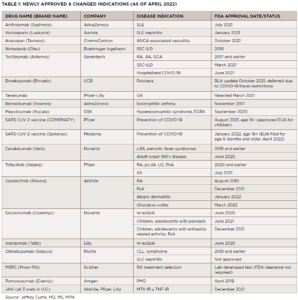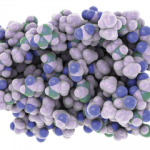Dr. Curtis highlighted a curiosity of the trial that stood out to him. “Remember what this drug does: It’s a monoclonal antibody to type I IFN receptor sub-unit 1,” he said. “So wouldn’t you expect the British Isles Lupus Activity Group [BILAG] Based Composite Lupus Assessment [BICLA] response in people with a high IFN gene signature to be even better than for [those with a low IFN gene signature]? Well, it wasn’t. I find it curious that what you’d think could be a stratifying biomarker in fact wasn’t stratifying. The response rate was just about as good for people without the signature.”
He also pointed out the increased risk of herpes zoster with anifrolumab and stressed the importance of vaccination.
“The rate of herpes zoster was quite high [7.2%], but you expect that in any drug that meaningfully affects the IFN pathway,” Dr. Curtis said. “So in fact, this rate of zoster would be pretty comparable to a patient with RA on a Janus kinase inhibitor and 10 mg of prednisone daily—or maybe even a bit more. Zoster vaccination will be quite critical for the people you’re putting on this [treatment].”
When asked which type of SLE patient he would prescribe anifrolumab for, Dr. Curtis said, “Patient selection is obviously critical. Remember, this wasn’t a drug targeted for severe lupus nephritis or neuro-psychiatric SLE, and the effect on joint disease wasn’t overwhelming [but the trial wasn’t powered for that and not all patients had joint disease]. I think typical SLE manifestations with the exclusion of those three is probably where I would position it.”
Voclosporin
Voclosporin is a calcineurin inhibitor (CNI) now approved in combination with a regimen of background immunosuppressive therapy for the treatment of adult patients with active lupus nephritis. Unlike older CNIs (e.g., tacrolimus), voclosporin doesn’t require drug level monitoring.
“[Trial] inclusion criteria are important when we’re thinking about when to use this drug,” said Dr. Curtis.
Patients studied had lupus nephritis class III, IV or V confirmed with renal biopsy within the last two years, relatively preserved renal function, with an estimated glomerular filtration rate (eGFR) greater than 45 mL per minute, and urine protein-creatinine ratio of 1.5 mL/mg or more (e.g., 2 mL/mg for those with pure lupus nephritis class V) by first morning urine void.2
Voclosporin was added to 1,000 mg of mycophenolate mofetil (MMF) given twice daily with a rapid prednisone taper from 20–25 mg daily, to 2.5 mg daily over 16 weeks. The primary outcome was complete renal response, which was 41% in the voclosporin arm and 23% in placebo “despite a really rapid and aggressive prednisone taper.”



